Hyundai Staria vs Toyota RAV4 – Which car suits you better?
Both models have their strengths – but which one suits you more?
Compare performance, efficiency, price and space directly: Hyundai Staria or Toyota RAV4?
Costs and Efficiency:
Price and efficiency are key factors when choosing a car – and this is often where the real differences emerge.
Toyota RAV4 has a noticeable advantage in terms of price – it starts at 35100 £, while the Hyundai Staria costs 42400 £. That’s a price difference of around 7294 £.
Fuel consumption also shows a difference: Toyota RAV4 manages with 1 L and is therefore clearly more efficient than the Hyundai Staria with 7.60 L. The difference is about 6.60 L per 100 km.
Engine and Performance:
Power, torque and acceleration are the classic benchmarks for car enthusiasts – and here, some clear differences start to show.
When it comes to engine power, the Toyota RAV4 has a distinct edge – offering 306 HP compared to 225 HP. That’s roughly 81 HP more horsepower.
In acceleration from 0 to 100 km/h, the Toyota RAV4 is significantly quicker – completing the sprint in 6 s, while the Hyundai Staria takes 10.20 s. That’s about 4.20 s faster.
In terms of top speed, the Toyota RAV4 performs slight better – reaching 180 km/h, while the Hyundai Staria tops out at 167 km/h. The difference is around 13 km/h.
Space and Everyday Use:
Whether family car or daily driver – which one offers more room, flexibility and comfort?
Seats: Hyundai Staria offers convincingly more seating capacity – 9 vs 5.
In curb weight, Toyota RAV4 is noticeable lighter – 1745 kg compared to 2275 kg. The difference is around 530 kg.
In terms of boot space, the Hyundai Staria offers distinct more room – 831 L compared to 580 L. That’s a difference of about 251 L.
In maximum load capacity, the Toyota RAV4 performs noticeable better – up to 1690 L, which is about 387 L more than the Hyundai Staria.
When it comes to payload, Hyundai Staria clearly perceptible takes the win – 775 kg compared to 600 kg. That’s a difference of about 175 kg.
Who comes out on top?
Overall, the Toyota RAV4 shows itself to be dominates this comparison and secures the title of DriveDuel Champion.
It convinces with the more balanced overall package and proves to be the more versatile choice for everyday use.
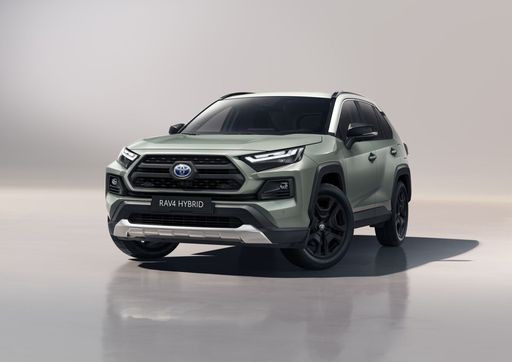
Toyota RAV4
Hyundai Staria
The Hyundai Staria stands out with its futuristic design, characterised by sleek lines and an expansive front grille that makes a bold statement on the road. Inside, it offers a spacious and versatile interior, providing a comfortable ride for both driver and passengers. This vehicle effortlessly combines practicality with a touch of luxury, appealing to families and professionals alike.
details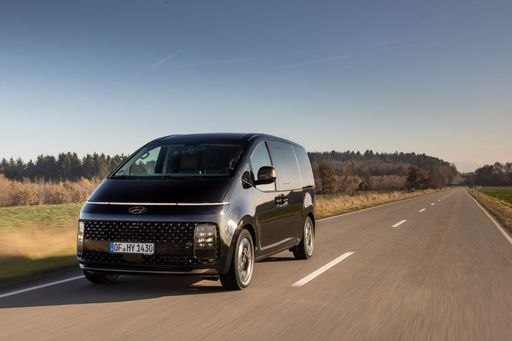 @ hyundai.news
@ hyundai.news
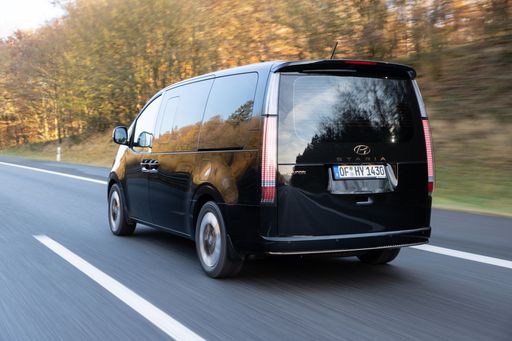 @ hyundai.news
@ hyundai.news
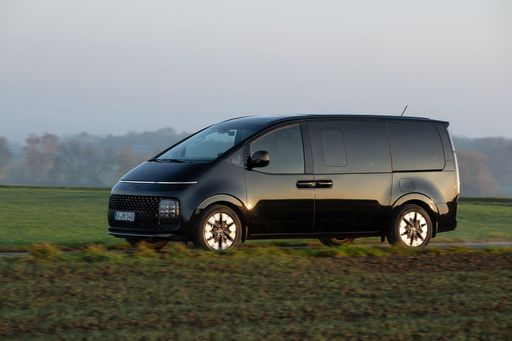 @ hyundai.news
@ hyundai.news
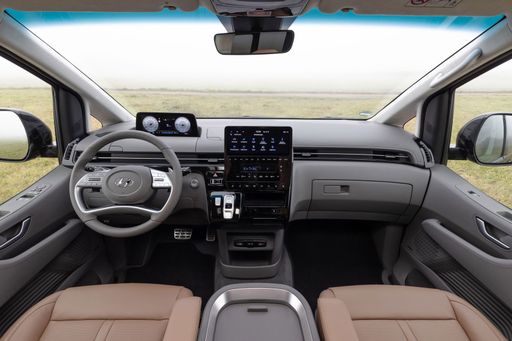 @ hyundai.news
@ hyundai.news
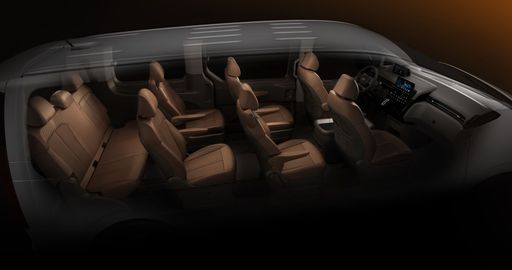 @ hyundai.news
@ hyundai.news
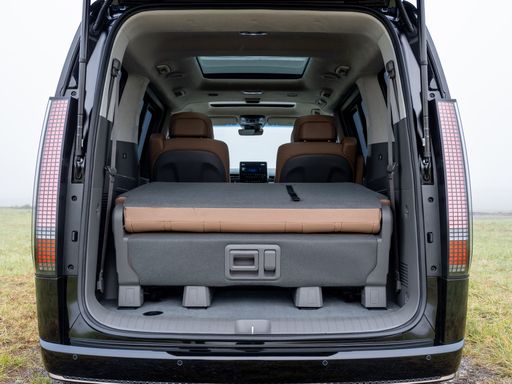 @ hyundai.news
@ hyundai.news
Toyota RAV4
The Toyota RAV4 stands out in the crowded SUV market with its distinct design, embodying a blend of robustness and style. Its cabin provides a harmonious fusion of comfort and practicality, offering plenty of space for both passengers and luggage. This vehicle is engineered to deliver a smooth driving experience, whether manoeuvring through city streets or exploring winding country roads.
details @ Toyota
@ Toyota
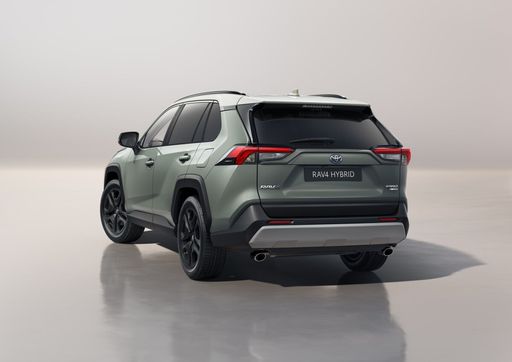 @ Toyota
@ Toyota
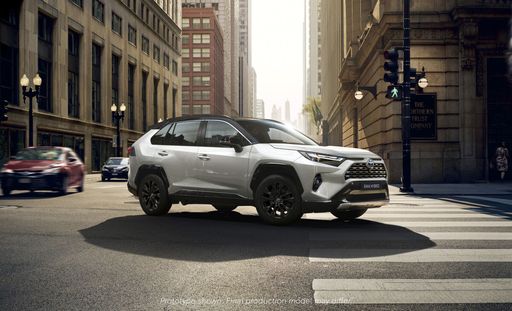 @ Toyota
@ Toyota
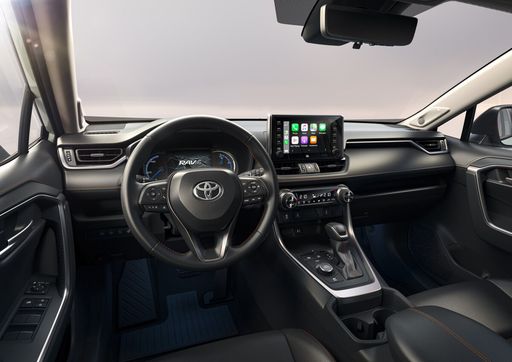 @ Toyota
@ Toyota

|

|
|
|
|
Costs and Consumption |
|
|---|---|
|
Price
42400 - 50500 £
|
Price
35100 - 55700 £
|
|
Consumption L/100km
7.60 L
|
Consumption L/100km
1 - 5.6 L
|
|
Consumption kWh/100km
-
|
Consumption kWh/100km
-
|
|
Electric Range
-
|
Electric Range
75 km
|
|
Battery Capacity
-
|
Battery Capacity
-
|
|
co2
172 g/km
|
co2
22 - 128 g/km
|
|
Fuel tank capacity
65 L
|
Fuel tank capacity
55 L
|
Dimensions and Body |
|
|---|---|
|
Body Type
Bus
|
Body Type
SUV
|
|
Seats
7 - 9
|
Seats
5
|
|
Doors
5
|
Doors
5
|
|
Curb weight
2275 - 2345 kg
|
Curb weight
1745 - 1910 kg
|
|
Trunk capacity
117 - 831 L
|
Trunk capacity
520 - 580 L
|
|
Length
5253 mm
|
Length
4600 mm
|
|
Width
1997 mm
|
Width
1855 mm
|
|
Height
1990 mm
|
Height
1685 mm
|
|
Max trunk capacity
431 - 1303 L
|
Max trunk capacity
1604 - 1690 L
|
|
Payload
605 - 775 kg
|
Payload
390 - 600 kg
|
Engine and Performance |
|
|---|---|
|
Engine Type
Full Hybrid
|
Engine Type
Full Hybrid, Plugin Hybrid
|
|
Transmission
Automatic
|
Transmission
Automatic
|
|
Transmission Detail
Automatic Gearbox
|
Transmission Detail
CVT
|
|
Drive Type
Front-Wheel Drive
|
Drive Type
Front-Wheel Drive, All-Wheel Drive
|
|
Power HP
225 HP
|
Power HP
218 - 306 HP
|
|
Acceleration 0-100km/h
10.20 s
|
Acceleration 0-100km/h
6 - 8.4 s
|
|
Max Speed
167 km/h
|
Max Speed
180 km/h
|
|
Torque
367 Nm
|
Torque
-
|
|
Number of Cylinders
4
|
Number of Cylinders
4
|
|
Power kW
165 kW
|
Power kW
160 - 225 kW
|
|
Engine capacity
1598 cm3
|
Engine capacity
2487 cm3
|
General |
|
|---|---|
|
Model Year
2024
|
Model Year
2024 - 2025
|
|
CO2 Efficiency Class
F
|
CO2 Efficiency Class
D, B
|
|
Brand
Hyundai
|
Brand
Toyota
|
What drive types are available for the Hyundai Staria?
The Hyundai Staria is available as Front-Wheel Drive.
The prices and data displayed are estimates based on German list prices and may vary by country. This information is not legally binding.
